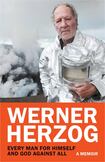
Every sane observer watching the digest of climate catastrophe, inept political buffoonery, casual inhumanity and war that passes for the daily news must be wondering “How did we get here?” In response, John Charles Chasteen’s brave, clear-sighted and prophetic book After Eden: A Short History of the World asks, given the violent history of our species, did anyone ever really think we could be anywhere else?
The Eden of the book’s title refers to the time in prehistory when homo sapiens lived under cultural conditions of relative peace and rough equality, before the rise of dominance hierarchies marked by systemic inequalities and lorded over by pharaohs, emperors, sultans, kings and presidents, almost exclusively male. As Chasteen explains, Eden’s tenure spanned most of human history, until about 12,000 years ago when our penchant for regular organised violence first burst forth.
After Eden begins by explaining that human beings’ anatomical development happened entirely within the Palaeolithic period. During this long time frame, our species moved away from the gorilla model in which larger males aggressively dominated females, and other males. Our species’ trajectory slowly shifted from being influenced primarily by biological evolution to being determined chiefly by cultural evolution, and in the small foraging bands we then lived in, we created cultures of egalitarianism and limited violence.
During the Neolithic period, however, as large agricultural settlements and cities began to emerge, humanity fell from Eden. The Fall happened because of a design flaw in our species that was activated once we began to settle in large numbers. The flaw arises from the fact that the children of our species require large amounts of love and care to develop cognitively and emotionally and become fully human and humane. Some individuals who do not get sufficient care, again mostly males, grow up to become violent and domineering towards others. Although a minority, these violent alpha males have played a defining role in the cultures of mass human settlements since history began. In a sense, with our fall from Eden our species leapt backwards in time and the gorillas among us regained control.
READ MORE
Although they differed markedly in languages, religions, and customs, all three “civilised” population centres had deeply embedded within them shared patterns of empire building based on appalling violence, cultures of misogyny, and deeply unjust social hierarchies
Given this perspective, Chasteen invites us to see history anew, not as a tale of intrepid adventurers, brave conquerors and munificent rulers, but as a tragic parade of dangerous, narcissistic leaders whose violent pathologies have trapped us in cultures that are now driving humanity to destruction, and whose behaviour and values we accept as normal.
[ Climate crisis: We need to act now to avert catastropheOpens in new window ]
Chasteen’s narratives are succinct, insightful and deeply informative. He describes how in 1500, just before the rise of the modern world, the “world” largely comprised three large population centres in China, India and the deeply interconnected territories of Europe and the Arab world. These centres were linked overland by the Silk Road and by sea via the Spice Route. The rest of the world, including the Americas, sub-Saharan Africa, Southeast Asia and Australia, were still sparsely populated by foraging peoples who maintained the ancestral lifestyle common to us all. Although they differed markedly in languages, religions, and customs, all three “civilised” population centres had deeply embedded within them shared patterns of empire building based on appalling violence, cultures of misogyny, and deeply unjust social hierarchies. It was upon this cultural base that modernity began its ascent.
And that ascent, of course, started from Europe, at the time of Columbus a patchwork of fiefdoms, embedded in a war cult characterised by murderous religious dogmatism.
Towards the book’s conclusion Chasteen writes: ‘Today, only unselfish co-operation on a global scale can save us. Not only is it nowhere in sight. It is something unknown in human experience’
The standard narrative from here, covering the past 500 years, is of the great voyages of discovery, of the Renaissance, the Enlightenment, the Industrial Revolution, and the spread of globalisation and prosperity that has lifted the bulk of humanity out of destitution and disease. All of this is broadly true, but Chasteen also reminds us of the pathologies within the foundations of modernity that have persisted throughout and remain with us still – imperialist ideologies fortified by religion; capitalist ideologies justifying extractive economies and social stratification; racist and gender narratives justifying exploitation, exclusion and discrimination. As Chasteen writes, if you expected civilisation to be “civilised” in the sense of ethically superior, expect to be disappointed.
[ The relentless rise of Homo sapiensOpens in new window ]
After Eden is history as awakening. Towards the book’s conclusion Chasteen writes: “Today, only unselfish co-operation on a global scale can save us. Not only is it nowhere in sight. It is something unknown in human experience.” This brilliant, penetrating book should be required reading for every schoolchild to alert them to the historical challenge facing their generation, namely, to fundamentally change the dangerously flawed cultural templates that they are inheriting.
Ian Hughes is author of Disordered Minds: How Dangerous Personalities are Destroying Democracy.












